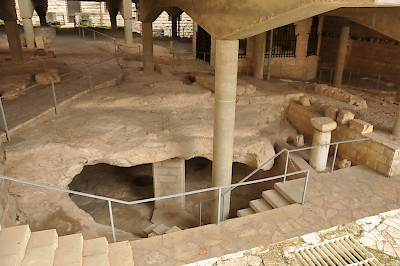Nazareth
Q430776Nazareth: small town in Galilee, not far from Sepphoris.

Excavations indicate that habitation dates back to the Bronze and Iron Age, but Nazareth was a small town. There is hardly any evidence for the existence of a settlement between the Assyrian era and the early Roman period. The village is not mentioned in the Jewish Bible. It is also absent from the two Talmuds. Among the remains is a network of caves from various historical periods, carved from the soft local rock.
Jesus of Nazareth
The four gospels mention Nazareth as Jesus' residence before his public life. Some simple houses have been excavated; the cemetery has been identified - there is a pre-Christian, Aramaic inscription - and suggests a very small population. From an economic and administrative point of view, Nazareth must have been part of greater Sepphoris.
Place of pilgrimage
There was a Christian community in the second and third centuries. It was not until the fourth century CE, when Christianity became prominent and pilgrimage to Palestine began, that Nazareth became a place of greater significance, eclipsing Sepphoris. A church was built on top of a cave that was believed to have been the place where Mary lived; it is mentioned by Egeria. Several architectural ornaments, found underneath a Byzantine mosaic, belong to a type that is known from synagogues, but these elements were later reworked with Christian motifs.